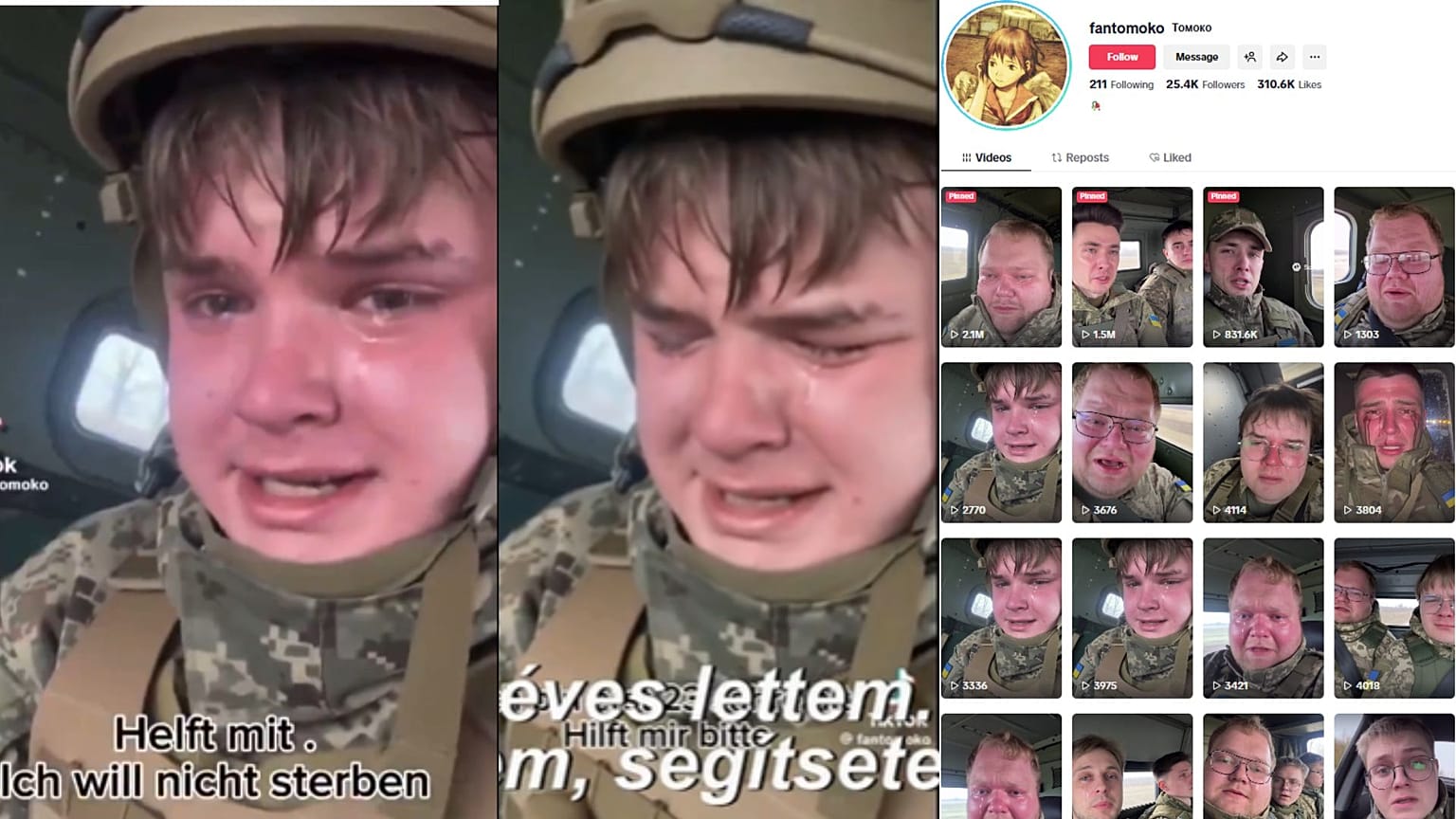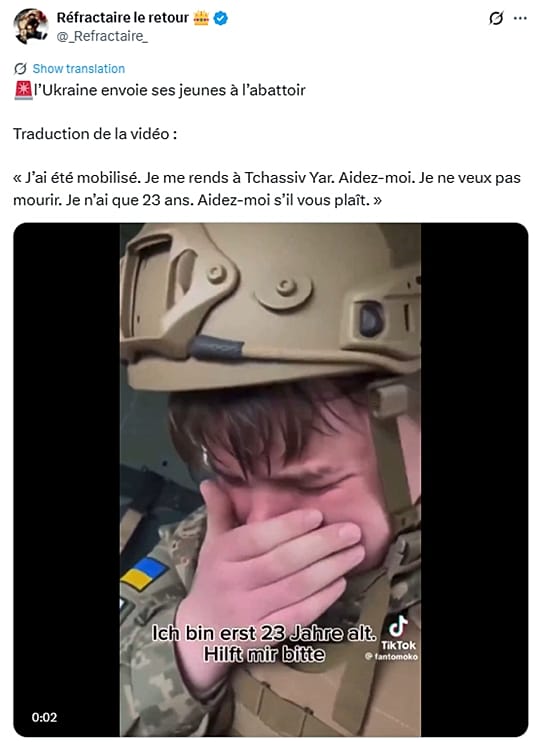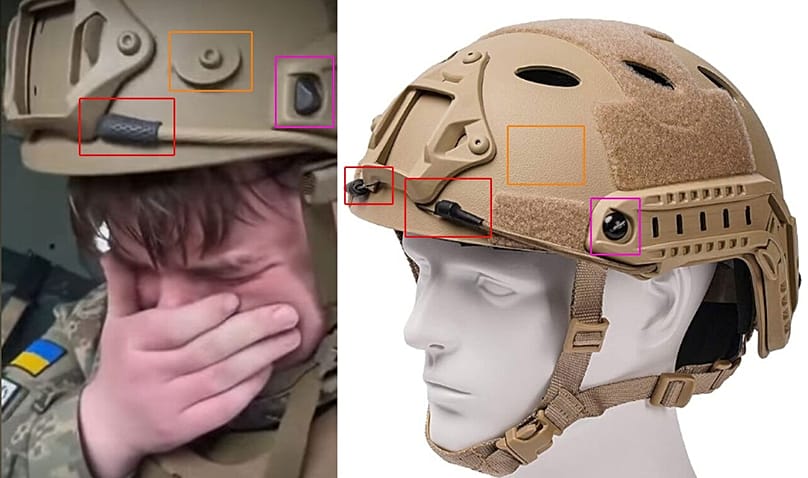Videos of a crying Ukrainian "conscript" have flooded European social media networks, particularly in Germany and Hungary, this week. The clip, however, appears to be created with help from Sora, OpenAI's new tool.
A video showing a young man claiming to be a Ukrainian conscript being sent to the frontline crying into a camera has been circulating on social media.
The video, which shows a man speaking in Ukrainian saying the words: "I don’t want to die, I’m only 23", has amassed hundreds of thousands of views in different European countries, where it was subtitled in Hungarian, German and English.
One Hungarian version of the clip has generated 1.8 million views alone. Euronews' verification team, The Cube, found further instances of the video being reshared with captions in French, Spanish, Greek, Turkish and even Japanese.
Posts above the footage claim that the alleged soldier was forcibly sent to the frontline, with messages in German and French claiming Ukraine and other European countries are to blame for sending Ukrainians to the frontline.
"Ukraine is sending its young people to slaughter," says one post in French.
However, there are several indicators that the video is fake and has likely been created with the use of AI.
A facial recognition search conducted by the Cube shows the face in the photo bears a likeness to a Russian streamer from St Petersburg.
According to a statement by the Centre for Countering Disinformation, a body affiliated with the Ukrainian National Security and Defence Council of Ukraine, "the face shared in the video belongs to a Russian citizen, not a Ukrainian".
In the video, the alleged conscript says, "I have been mobilised. I am going to Chasiv Yar." Ukrainian language experts told The Cube that the pronunciation of the words “Chasiv Yar” did not sound natural or consistent with native Ukrainian speech, raising doubts over the video's authenticity.
The conscription age in Ukraine is currently between 25 and 60. The youngest age was lowered from 27 to 25 in April of last year to bolster troop numbers amidst Russia's full-scale invasion, which is not far from its fourth year. Those under the age of 25, such as the age the man in the video claims to be, are only able to sign up voluntarily.
The video comes as Ukraine's military conscription is a hot topic for discussion. Ukraine in February introduced a one-year military contract targeting 18 to 24-year-olds, offering them a salary and additional bonuses. In April, the deputy head of the presidential office, Pavlo Palisa, said that only several hundred men of this age had signed agreements to serve.
Video likely created with Sora
Conducting a reverse image search of stills, the clip can be traced back to a TikTok account, which has since been deleted. A search of the account shows dozens of videos appearing to show Ukrainian "conscripts" in distress.
Some contain the watermark of Sora, OpenAI's text-to-video artificial intelligence tool. One video shows a man appearing as a Ukrainian conscript crying tears of blood.
Giorgio Patrini, CEO and co-founder of Sensity AI, which finds and monitors AI-generated synthetic videos, said their technology found that videos on the account were created with Sora, with the watermark removed post-production.
The app, which recently became available for Android users in a select number of countries, allows users to create realistic videos using their likeness, provided they give permission to the app. Users are given the option to make their likeness private.
According to Patrini, the helmet worn by the soldier in the viral clip has several "inconsistencies when compared with actual military equipment".
The side accessory rail and screw layout, as depicted by Sensity below, differ from typical military models. Additionally, the helmet has no velcro panels.
A Ukrainian soldier consulted by The Cube confirmed that the headset cable running along the helmet in the video appeared unusual and not consistent with typical military equipment.
In another video posted on the TikTok account, Sensity found that the writing on the soldier's jacket isn’t written in Cyrillic, "but rather uses Latin letters with superficial resemblance to Cyrillic".
The nuances that make the video fake are, however, difficult to spot. According to Francesco Cavalli, Sensity's COO, examples of videos such as this created using AI Video tools are "a cheap and widely accessible weapon for influence operations".
"It's clear to anyone now that they are being deployed at scale for gaining strategic goals on the hybrid warfare battlefield," he said. "The goal is simple but effective: shape international opinion, demoralise the opponent, and blur the line between reality and fiction."

















